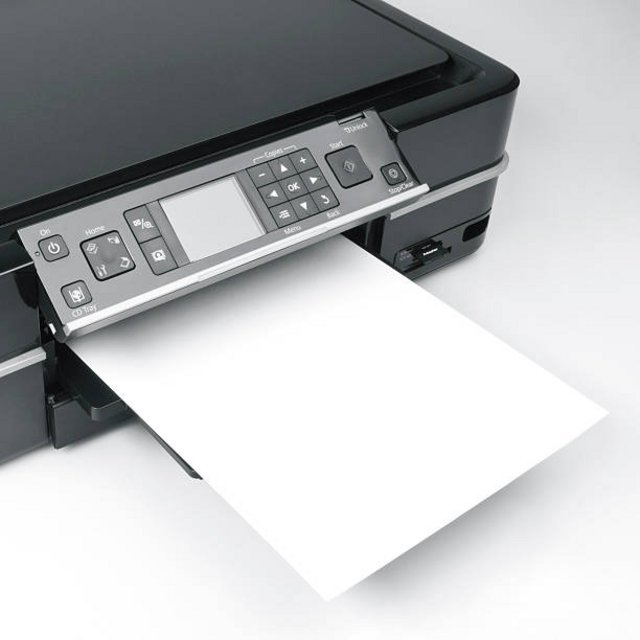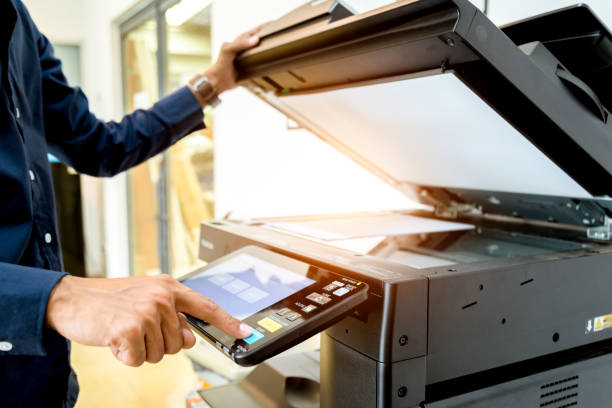
Selecting a printer is an important decision. There are a variety of models, types and models each with different capabilities and capacities. Do you need printing equipment for your home or office? Are you a small-sized business looking for a printer that is that can handle a greater work load? There's a printer that can meet all needs regardless of how large or small. Knowing what you should look for and setting a budget will help you find the right one.
Consider these things when purchasing the right printer
If you are looking to purchase a new printer, you should first determine what you need to accomplish. The typical home user requires an incredibly versatile printer for the printing of a variety of tasks, from assignments to photos to documents. Color inkjet printers that fall within the budget range of less expensive printers are usually suitable for the home-based user's needs. If you own a home office then you'll be searching for a printer with an elegant, professional look. Before you decide to purchase an laser printer, take a take a look at similar-priced inkjets. A quality inkjet performs equally well and will probably have cheaper ink. Businesses looking to purchase printing equipment will typically opt for a model that can handle a higher demand and perform multiple tasks. Laser printers are typically the most suitable choice for this environment.
Take A Look At The Features
Choose a printer with specs and capabilities that match your needs for printing. It is often the first thing to consider when you are deciding between laser or inkjet. Inkjets have advanced through the years and generally produce high-quality prints. For smaller businesses or home users using a premium inkjet could be better than a cheaper laser. Bigger offices would consider the possibility of a laser printer. It is important to consider the following options when buying a printer, inkjet or laser:
Connectivity
Each printer are able to be connected to the computer using USB. However wireless printers are more practical. Wireless connectivity is crucial for those who have several users. This allows you connect your printer to your network at home or on your the business network to ensure that all can print from the printer. Mobile devices can also be linked to the network enabling printing documents directly from your tablet or phone.
Functions
Printers are capable of performing various functions like scanning and photocopying as well as the ability to fax. Multipurpose printers are flexible and efficient, reducing the expense of purchasing additional equipment. A printer that is all-in-one is a great choice when you don't have the right equipment to complete each job.
Paper managing
Consider how much printing your printer is doing every day. The paper capacity of your printer should be more than the pages you'll be printing each day. It is not a good idea to have to get up each five minutes in order to load paper into the tray. Small home printers typically have a capacity of between 100 and 150 sheets, whereas commercial printers can hold up to 1000 sheets, depending on their size. A busy office should consider a printer with multiple trays in order to accommodate the most sheets. Another thing to think about is the type of paper you'll print on, as well as the size and thickness.
Duplexity
Certain printers print pages with double sides. This is an excellent feature. It cuts down paper usage which saves money as well as aiding the environment. The feature is available in a wide range of printers. Certain printers need you to manually flip the page, and then reload it, which is a pain. This feature is available on certain printers, however you need to verify whether the printer is either an automatic or manual option.
Speed and quality
The quality and speed of printing is contingent on the needs of your customers. If you're printing images or designs you'll require the use of a printer that is higher in quality image than one printing just plain text. A company printing multiple documents would look at the need for a printer with a higher printing speed to print the documents as fast as is feasible.
The Cost Of Purchasing A Printer
Last but not least, budget. The type of printer you choose to purchase will depend on the price as well as features. Think about the amount of money you'd like to invest in purchasing an printer. Once you have an idea of what you want to spend, you can look for a printer within the same price bracket to meet your criteria. Be aware of any additional costs. The printer needs to be filled with ink and toner. Printers can also need to be maintained to ensure that they run smoothly. Consider the long-term costs of printer maintenance. It's not recommended to buy a printer cannot be filled due to expensive cartridge costs.
